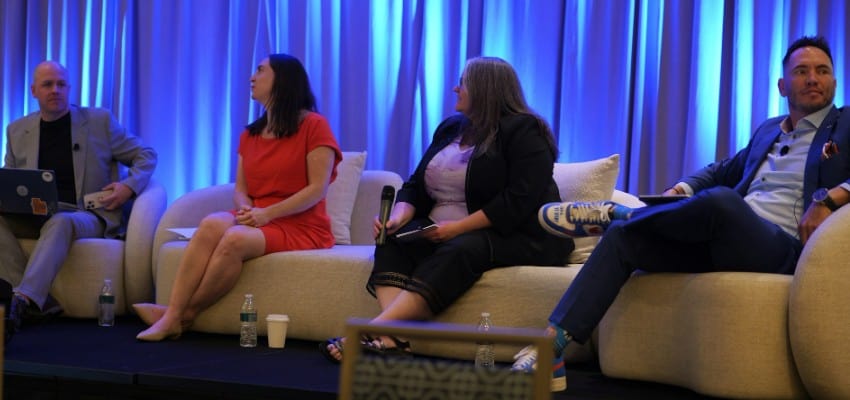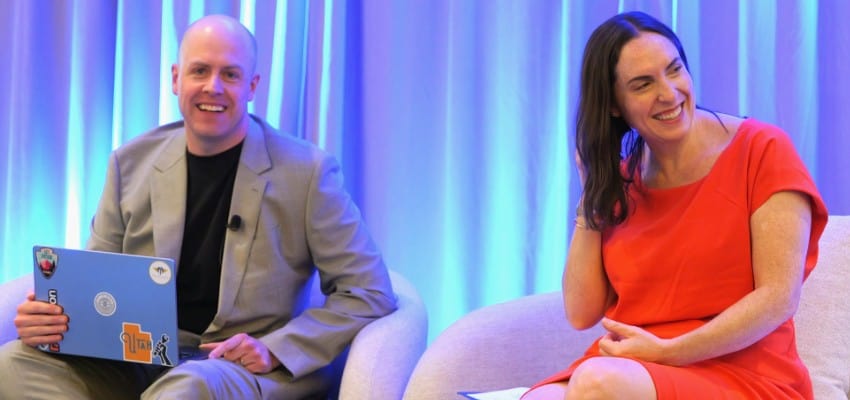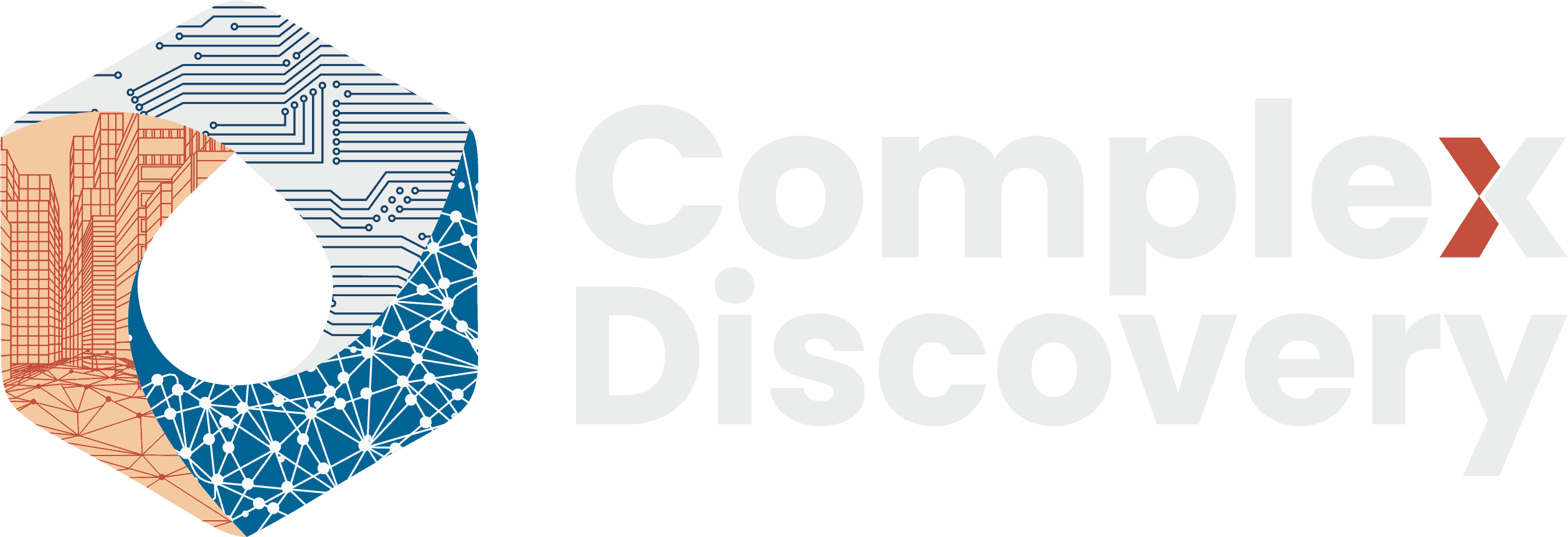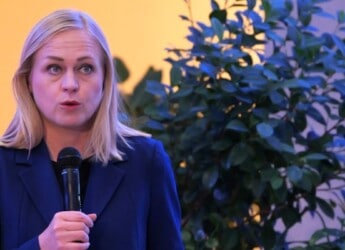Editor’s Note: The Discovery & Litigation Support Roundtable at ILTACON 2025 brought together moderator David Horrigan of Relativity and an accomplished panel: Janis Cheston of Miller Thomson LLP, Scott Milner of Morgan, Lewis & Bockius LLP, Melissa Weberman of Arnold & Porter Kaye Scholer LLP, and Phil Weldon of Hecker & Fink LLP. Their discussion offered a rare mix of history, humor, and hard-edged insight into how legal teams are adapting to technological change. Bridging the slow climb of TAR adoption and the rapid ascent of generative AI, the panel grounded every point in the realities of cooperation, proportionality, billing, and governance. For eDiscovery and litigation support professionals, the conversation reinforced that while tools evolve, strategic thinking, ethical awareness, and technical fluency remain constant requirements for success.
Content Assessment: From Bates Stamps to Bots: ILTACON Roundtable Traces Legal Tech's Leap from TAR to AI
Information - 94%
Insight - 95%
Relevance - 95%
Objectivity - 96%
Authority - 96%
95%
Excellent
A short percentage-based assessment of the qualitative benefit expressed as a percentage of positive reception of the recent article from ComplexDiscovery OÜ titled, "From Bates Stamps to Bots: ILTACON Roundtable Traces Legal Tech's Leap from TAR to AI."
Industry News – Technology Beat
From Bates Stamps to Bots: ILTACON Roundtable Traces Legal Tech’s Leap from TAR to AI
ComplexDiscovery Staff
NATIONAL HARBOR, Md. — Not so long ago, a Bates stamp was the cutting edge of litigation technology — a mechanical contraption that methodically numbered every page of a legal production. Today, many of those same professionals are weighing the merits and risks of generative AI systems that can draft polished briefs in seconds.
That sweeping leap — from the mechanical to the machine-learning — framed the 2025 Discovery & Litigation Support Roundtable at ILTACON, the largest annual gathering of legal technologists in the world. Hosted by the International Legal Technology Association, ILTACON attracts law firm leaders, corporate legal operations professionals, technology vendors, consultants, and innovators from around the world. For 45 years, it has been the premier venue for sharing expertise, networking, and exploring the tools that shape the business and practice of law. This year’s meeting — one of the largest in ILTACON history — brought more than 4,400 participants to the Gaylord National Resort & Convention Center.
Together, they were tasked with unpacking a decade-plus of legal technology change — from the tentative early adoption of TAR to the swift, and sometimes bumpy, arrival of generative AI.

Setting the Stage: Technology Time Travel
Before tackling complex questions about TAR and AI, Horrigan warmed up the audience with an interactive “blast from the past” quiz on legal technology.
Images of vintage devices flashed on the screens: the Bates numbering machine, the BlackBerry, and the Palm Pilot, as well as the “Pocket Part” that once updated legal volumes before online research became the norm.
When asked who had actually used the mechanical Bates stamper, many in the room raised their “digital hands” via online polling. Weldon recalled late nights in the pre-digital era: “A Friday night production could kill your whole weekend. Ink on your hands, page numbers off by hundreds, and you might not realize it for 200 pages.”
Cheston shared that her first “texting device” was a pay-as-you-go cell phone used on a trip to Scotland, back when she questioned why anyone would type instead of call. Milner remembered the BlackBerry era fondly — his daughter’s fifth word, he joked, was “BlackBerry.”
The lighthearted opening underscored how much the industry’s tools have changed — and how quickly.

The TAR Era: From Landmark Ruling to Reluctant Adoption
From there, Horrigan traced the modern era’s starting point: the 2012 Da Silva Moore v. Publicis Groupe decision, in which U.S. Magistrate Judge Andrew Peck recognized technology-assisted review as an acceptable method for document review.
Weldon saw TAR as a “massive accelerant” for document review speed, but adoption still depended on client consent and partner approval. Cheston’s path was slower. Working in smaller Canadian firms until 2013, she relied on scanners, Adobe, and paper binders. She didn’t encounter TAR until 2019, after joining Miller Thomson’s national eDiscovery team.
Poll results showed TAR’s resilience: most attendees reported using it regularly, with no one indicating they had never tried it.
2015 Rule Changes: Cooperation and Proportionality in Practice
The panel turned to the 2015 amendments to the Federal Rules of Civil Procedure — notably Rule 1’s cooperation mandate, Rule 26’s proportionality test, and Rule 37(e)’s sanctions framework.
Weberman recalled little immediate change in practice, but a gradual cultural shift toward resolving disputes. Still, she noted, meet-and-confers can be slow-moving.
Audience members emphasized internal cooperation as equally critical. One paralegal described finally being included in every new case, ensuring discovery protocols were technically feasible before agreements were made. Another cautioned that lawyers sometimes agree to terms they don’t fully understand — like producing data in formats they can’t generate.
Proportionality continues to challenge practitioners. “It’s a moving target,” Milner said. Weberman stressed documenting burden early to support proportionality arguments in court.
Cheston offered a Canadian perspective: rules and practices vary by province, with Ontario requiring formal discovery plans and Saskatchewan taking a looser, often “produce first, ask questions later” approach. In some regions, PDF productions without metadata remain common.

Generative AI: Rocket Adoption, Real Risks
If TAR’s rollout was measured, the adoption of generative AI has been explosive. Since late 2022, tools like ChatGPT have been applied to drafting, summarization, research, and litigation strategy.
But with speed comes risk. Horrigan highlighted three cases where AI-generated “hallucinations” — fabricated legal citations — made their way into court filings, including the widely reported MATA v. Avianca. In each, judges emphasized that AI tools are permissible, but their outputs must be verified like any other legal work.
Weberman warned that non-lawyer contributors — experts, consultants, even clients — may already be producing AI-assisted work without proper vetting. Weldon advised running quality checks on all incoming material, including opposing counsel’s submissions.
Compared to TAR, the appeal of generative AI is broader and more immediate. “In the last five months, I’ve had five lawyers ask for AI training,” Cheston said. “I’ve never had anyone ask to learn more about active learning.”
Attendees cited three drivers of rapid adoption: applicability beyond review, consumer familiarity, and more transparent outputs with citations and rationales.
Opportunities and the Economics of Efficiency
For Milner, AI’s impact goes beyond speed. He envisions new positions, such as “ethical AI agents,” to manage the responsible implementation and noted that data scientists — once uninterested in law firm roles — are now applying to join.
Still, efficiency has billing implications. Cheston foresees a shift from bulk review toward targeted case analysis, but not the end of hourly billing. Weberman cautioned that high AI tool costs could be viewed as overhead, complicating recovery.
Research with IDC suggests that billable-hour firms are adopting AI faster than task-based firms, challenging the notion that efficiency undermines hourly models.
Clients may accelerate the conversation. One audience member likened it to looking up recipes: “If I can get the answer instantly at home, I expect my lawyer to work just as efficiently — and bill accordingly.”
Policy, Education, and Protecting the Record
Panelists agreed: no AI use should proceed without a formal policy. Weldon recommended requiring partner approval and client consent for every instance, as well as knowing exactly where data is stored and processed.
Milner emphasized the importance of cross-training between legal and technical teams to prevent costly missteps. Cheston urged gauging the other side’s knowledge early: “If they give you a deer-in-headlights look when you say ‘native redactions,’ adjust your approach.”
Weberman saw a broader opportunity: using AI to expand pro bono reach and close the justice gap. Programs like Relativity’s “Justice for Change,” which offers free services for pro bono matters, demonstrate how advanced tools can serve underserved communities.

From Stamps to Strategy
The Roundtable began with a nostalgic look at Bates stamps and BlackBerrys, and ended with sober reflection on AI governance. In between, it traced a profession’s evolution from paper to predictive coding to prompts, underlining a constant truth: the technology matters less than the professionals guiding it.
“Generative AI is the new frontier,” Cheston concluded. “Success or failure will depend on the technical and ethical competence of its users.”
From stamps to strategy, the leap has been remarkable. Whether the machine in question is mechanical or machine-learning, the responsibility remains the same: ensure the documents — and the facts — speak for themselves.
News Sources
- Horrigan, D., Cheston, J., Milner, S., Weberman, M., & Weldon, P. (2025, August 11). Discovery & Litigation Support Roundtable: From TAR to Generative AI [Conference session transcript]. ILTACON 2025, National Harbor, MD.
- ILTACON
Assisted by GAI and LLM Technologies
Additional Reading
- What’s Your Pink Cadillac? A Morning of Joy and Resilience at ILTACON 2025
- Managing Emerging Data in eDiscovery: Lessons from LegalTechTalk 2025
- What UK Law Firms Really Want: Procurement Insights from LegalTechTalk 2025
- The O2’s Transformation Sets the Stage for LegalTechTalk 2025
- HaystackID® Elevates Legal Tech Strategy Across Europe with Case Insight™ and CoreFlex™ (HaystackID)
Source: ComplexDiscovery OÜ







































